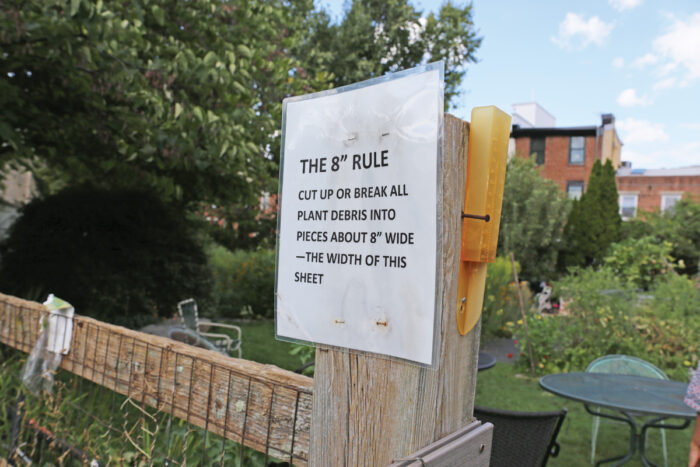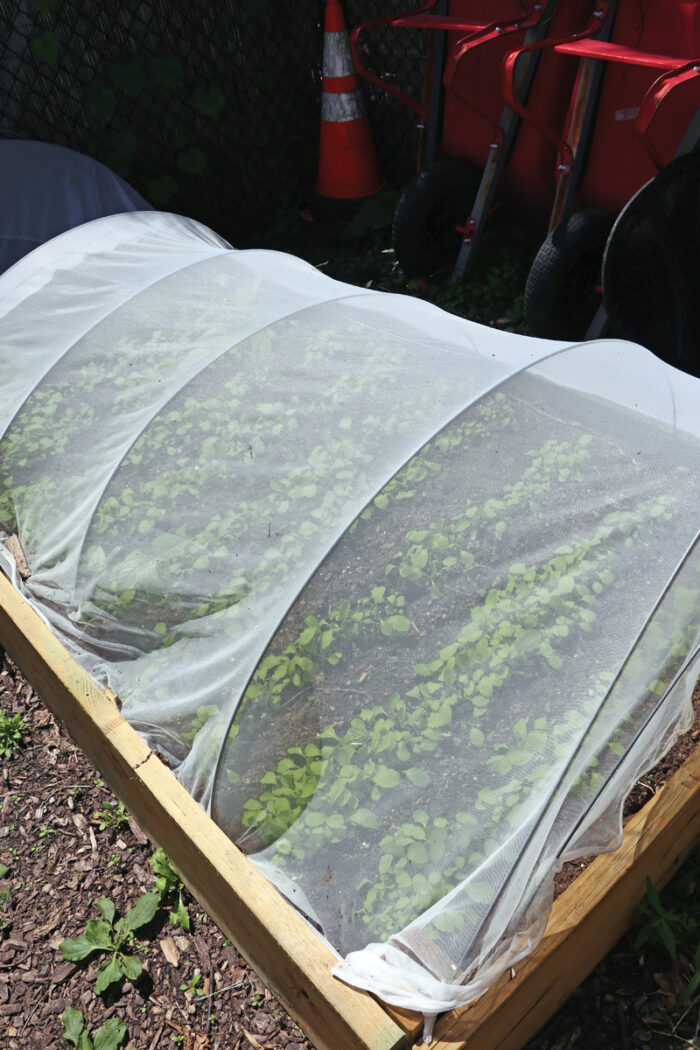Philadelphia is known as America’s Garden Capital because there are more than 30 public gardens, arboreta, and historic landscapes within 30 miles of the city center. But walking through any neighborhood, you will quickly discover the City of Brotherly Love is also a hub of urban agriculture. Since the 1970s, generations of growers have created over 200 gardens and farms throughout the city, transforming previously vacant or blighted lots into green spaces that enrich and enliven neighborhoods. Supported by public policy and organizations like the Neighborhood Gardens Trust (NGT) and Pennsylvania Horticultural Society (PHS), community gardeners grow healthy food, cultivate beautiful flowers, and create peaceful pocket parks where neighbors gather and connect with each other.
If you are looking for fresh ideas for an outdoor space of any size, let the creativity and practicality of Philadelphia’s community gardeners inspire you to make a positive change in your own homegrown environment. The following ideas come from the growers that tend the Growing Home Gardens and Bel Arbor Community Garden in South Philadelphia.
Use what you have
At Bel Arbor Community Garden, locally salvaged materials add layers of history and interest to pathways, garden beds, and structures. Developers sometimes offer free brick and stone from nearby demolition projects that the gardeners recycle into paving and edging (above). Larger architectural elements become sculptures with local backstories (below). An arbor clad with natural branches (below) brings a touch of wildness and whimsy into the heart of this horticultural hangout.

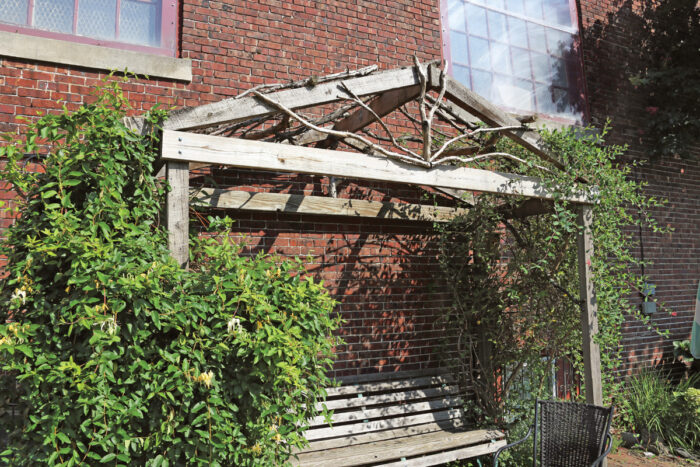
Keep costs low with a simple raised bed design
The raised bed shown here is easy to construct and very resource efficient, maximizing the number of beds that can be built on a tight budget. First, 4×4 corner posts are set into the ground, then 2×10 boards are fastened to the outside faces of the posts to form the perimeter of the bed. Construction is quick, and components can be replaced as needed.
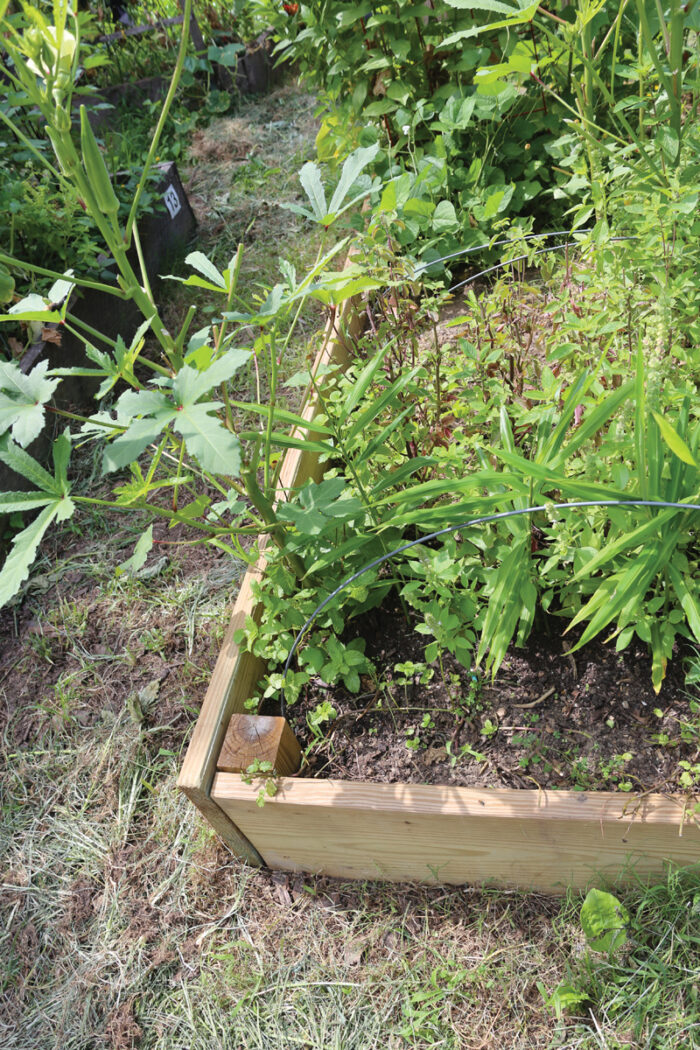
Bring in the beneficial insects
Blunt mountain mint (Pycnanthemum muticum, Zones 4–8) has been tucked into a vegetable plot to draw in pollinators and natural predators. Its tiny flowers backed by silvery bracts teem with bees, wasps, flies, and butterflies from midsummer through early autumn. Unlike culinary mint (Mentha spp. and cvs., Zones 3–9), which spreads rampantly via underground runners, this North American native forms dense, weed-suppressing clumps that expand outward via shallow rhizomes. And in the spirit of community gardening, if a clump gets too big, it is easy to divide and share with neighbors.
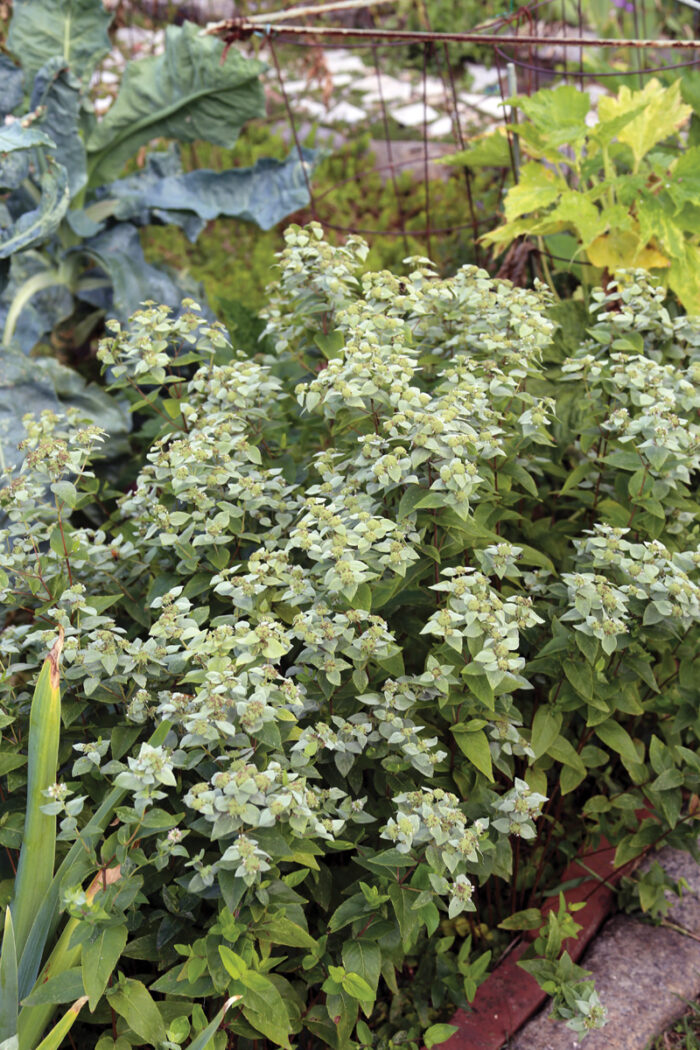
Encourage a “greening effect”
On the blocks surrounding a well-tended community plot, neighbors are often inspired to experiment with plantings of their own. Sidewalks and stoops are softened with lush greenery and colorful flowers overflowing from window boxes and containers like you see below. Although growing plants in public takes some bravery, Philadelphia residents seem to universally treasure, respect, and support the value that plants bring to their streetscapes.

Follow the 8-inch composting rule
Whether you collect plant debris in a bin or “chop and drop” in garden beds, smaller pieces will break down more readily and take up much less space than larger ones. A good rule of thumb is to always cut stems and other organic materials into sections shorter than the width of a piece of typing paper. Since the pile will be easier to turn without long branches and fibers tangling together, you may even be tempted to turn it more often.
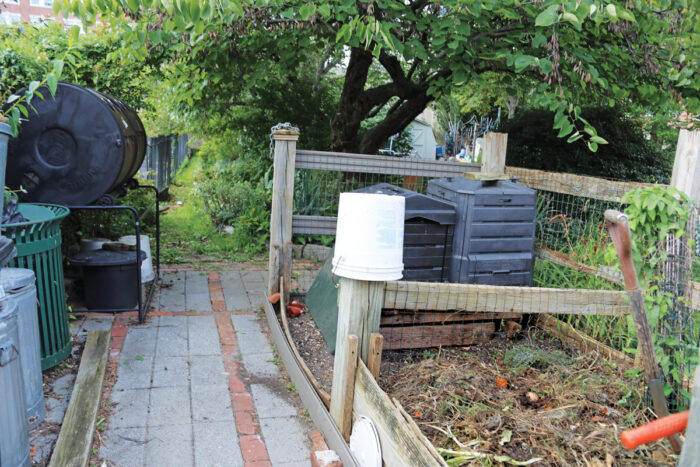
Extend the veggie harvest into fall
Succession planting allows a vegetable plot to stay productive over a long season. To maximize available space, seedlings can be started in trays several weeks before they will be needed to fill garden openings after other crops are harvested (below). Insect netting (right) is useful for protecting young seedlings from summer pests without trapping heat the way a nonwoven floating row cover will often do.
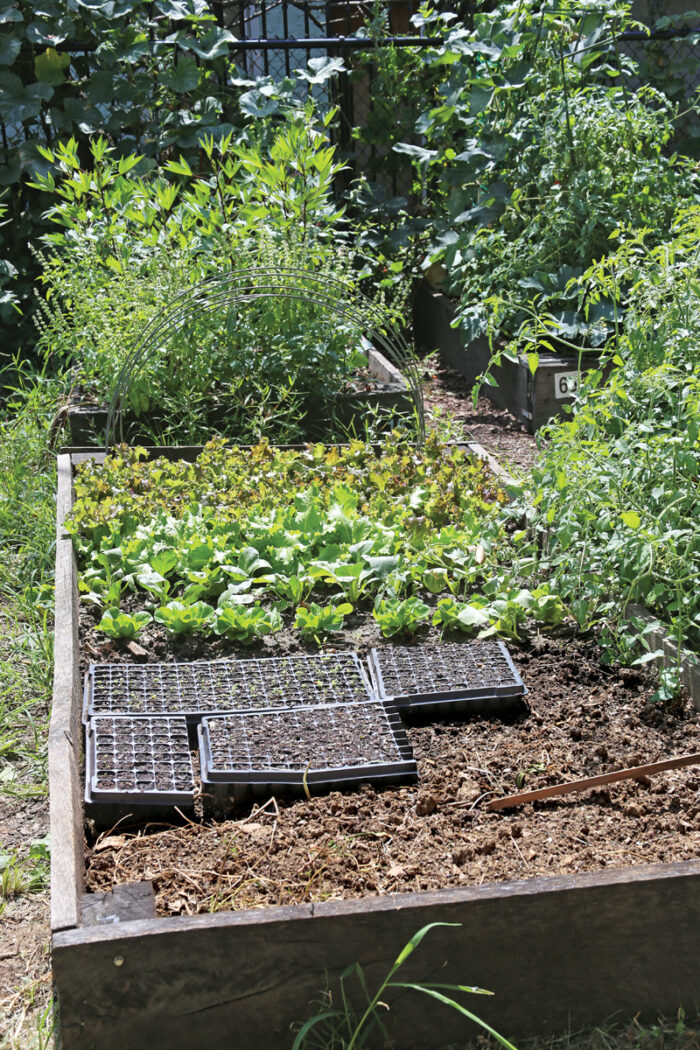
Mow paths instead of weeding them
For the pathways between raised beds, turfgrass or a low-growing ground cover can be an excellent, low-maintenance solution. Mulching paths with an organic material like wood chips is costly and labor intensive, and still does not guarantee a weed-free pathway. Layers of cardboard will suppress weeds but with aesthetic drawbacks. The gardeners at this site find that mowing between beds is an efficient way to keep the garden looking organized and tidy without a lot of extra effort.
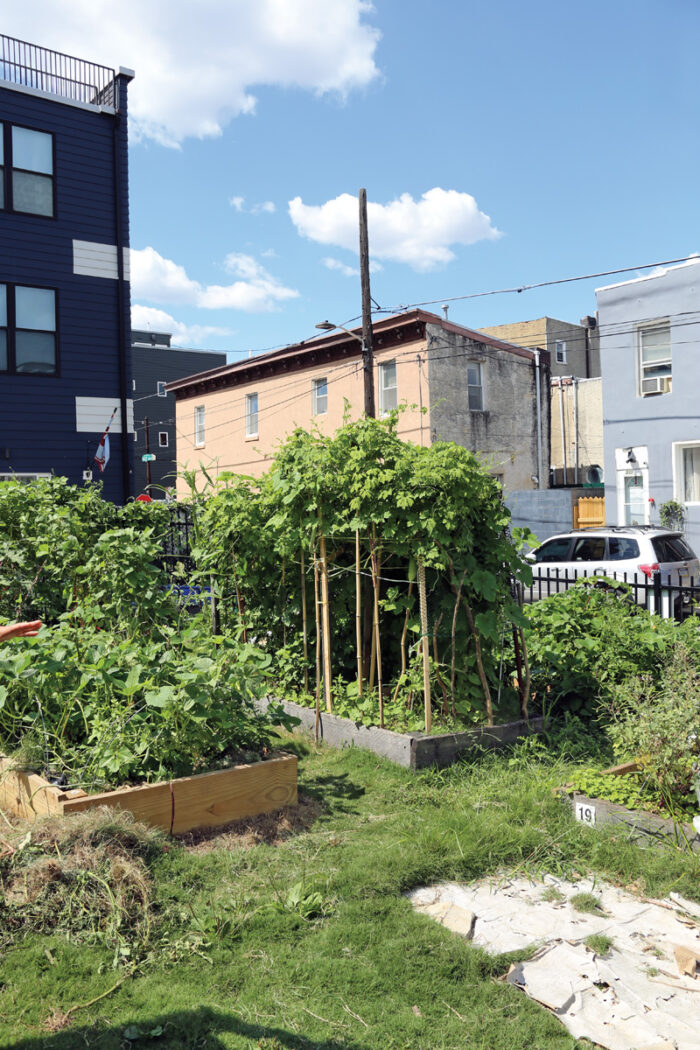
Share and learn with your neighbors
At one of the Growing Home Gardens sites, a colorful mural depicts the many culturally distinct regions of Burma and Bhutan and lists the names of some of the traditional crops that the community gardeners are growing on the adjacent plots. Raised beds and containers filled with herbs and flowers invite visitors to step off the sidewalk and spend a little time immersed in garden scents and sights. If your home garden is part of a community landscape, never underestimate the value it brings to those who see it every day and grow to love it.
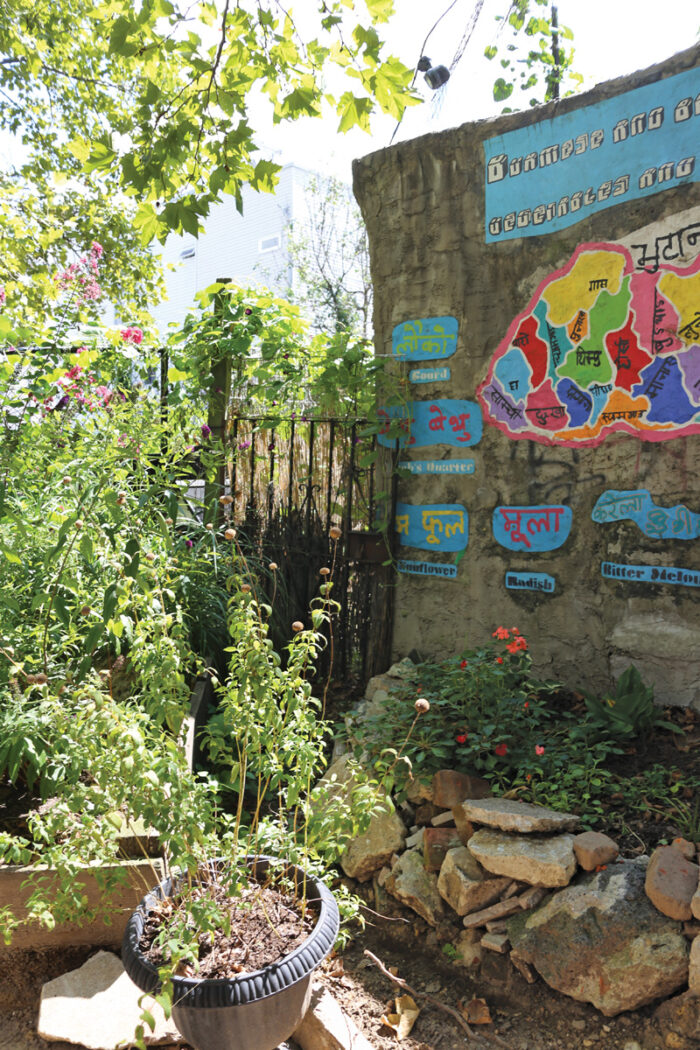
Fences make great trellises
Vining plants efficiently utilize vertical space as long as they have somewhere to climb. Here, the Growing Home gardeners have built a variety of supports against a perimeter fence where beans, squash, melons, and other vines can ramble without covering precious ground within the garden. In future seasons, garden organizers hope to secure funding for more conventional trellis materials like welded wire panels. But in the meantime, these perimeter plantings produce bumper crops of healthy food within an impressively small footprint.
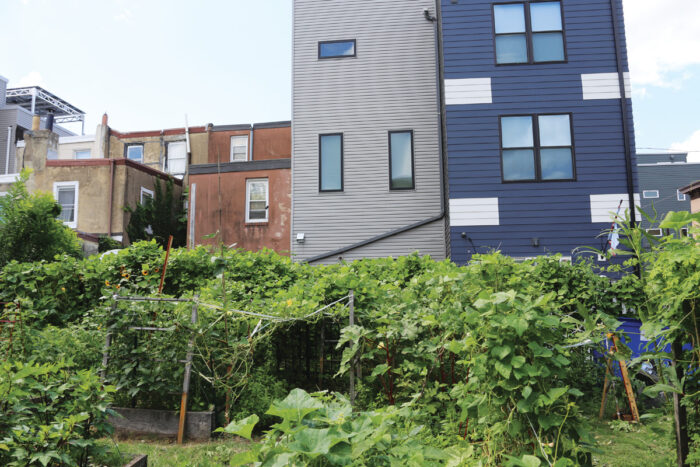
Learn More:
Pollinators Favorite Nectar Plants
Companion Planting Is Not a Myth
Listen to Our Podcast: Let’s Argue About Plants!
Try a taste of something new
Growing Home Gardens, supported by the Southeast Asian Mutual Assistance Association Coalition (SEAMAAC), provides space for community members to grow food crops that are essential to their native cuisines and difficult to purchase locally. The gardens also provide a beautiful outdoor space where over 100 Burmese and Bhutanese refugees relax, make meaningful connections with fellow gardeners, and share cultural and agricultural knowledge across generations. The following crops, which are popular with the Growing Home gardeners, could be fun to add to your own backyard.
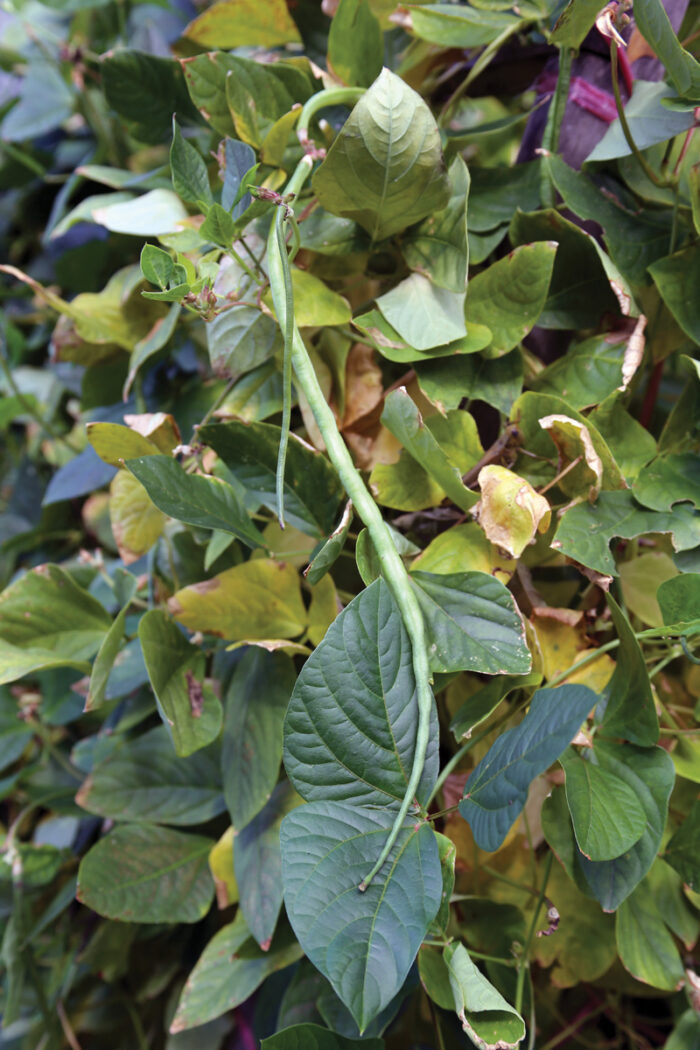
Long bean (Vigna unguiculata subsp. sesquipedalis, annual)
Long bean is a staple crop native to Southeast Asia. Sometimes called yardlong bean because the pods can grow over 30 inches long, its beans will be at their most tender if harvested at around 12 inches long. The plants are more vigorous and heat-resistant than those of pole beans or bush beans, and regular harvesting promotes continued production through frost. Sow seeds after the danger of frost has passed, and provide this climber with a sturdy trellis to get the vines up off the ground.
Bitter melon (Momordica charantia, Zones 9–11)
Bitter melon is grown in India, China, Southeast Asia, and parts of Africa and South America. Thoai Nguyen, the chief executive officer at SEAMAAC, moved to Philadelphia from Vietnam when he was 9 years old and remembers dishes with bitter melon being part of his family’s Lunar New Year celebrations. As a child he didn’t exactly enjoy the fruit’s pungent flavor, but learned that it represents the idea of moving forward into a new year, leaving the bitterness of the previous year behind. “I’ve always thought of that as a very elegant way to start the new year. And I’ve grown to love, and even crave, the flavor. Bitter melon tastes amazing with hot chili peppers.”
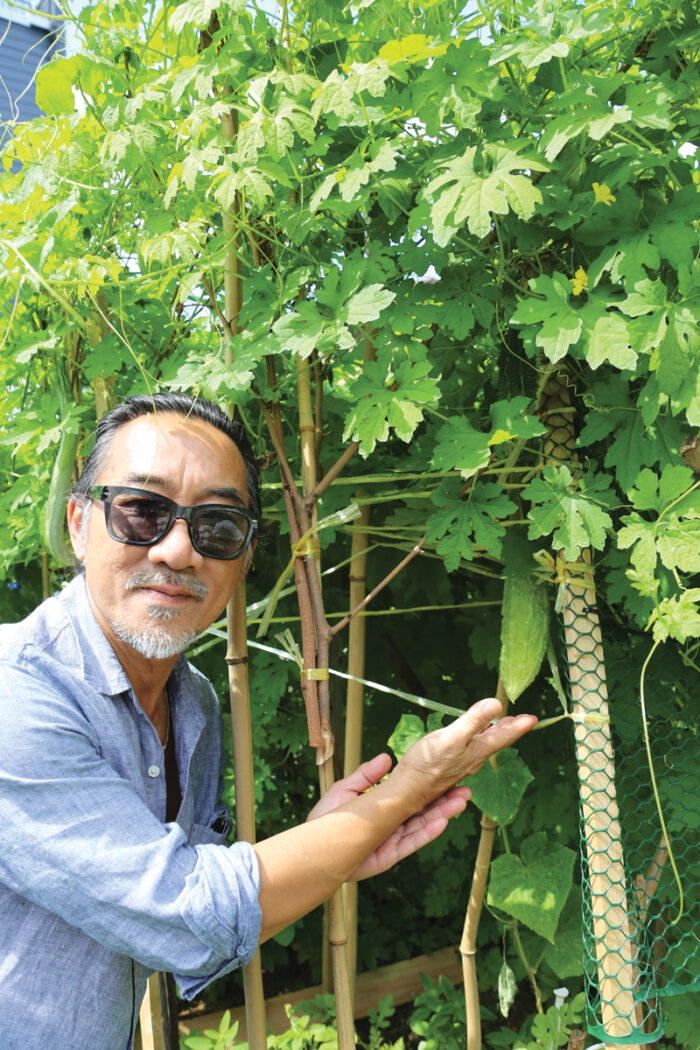
Roselle
Roselle (Hibiscus sabdariffa, Zones 8–11), also known as Asian sour leaf, is grown in tropical and subtropical regions around the world for its edible leaves and flowers. In colder climates, it can be grown as a warm-season annual. Sabia Afroz, the community planning coordinator at SEAMAAC, says that the flavorful, nutritious leaves are used in a manner similar to spinach in recipes. With beautiful foliage and attractive flowers that emerge toward the end of the growing season, this could be a lovely addition to any summer container or ornamental bed.
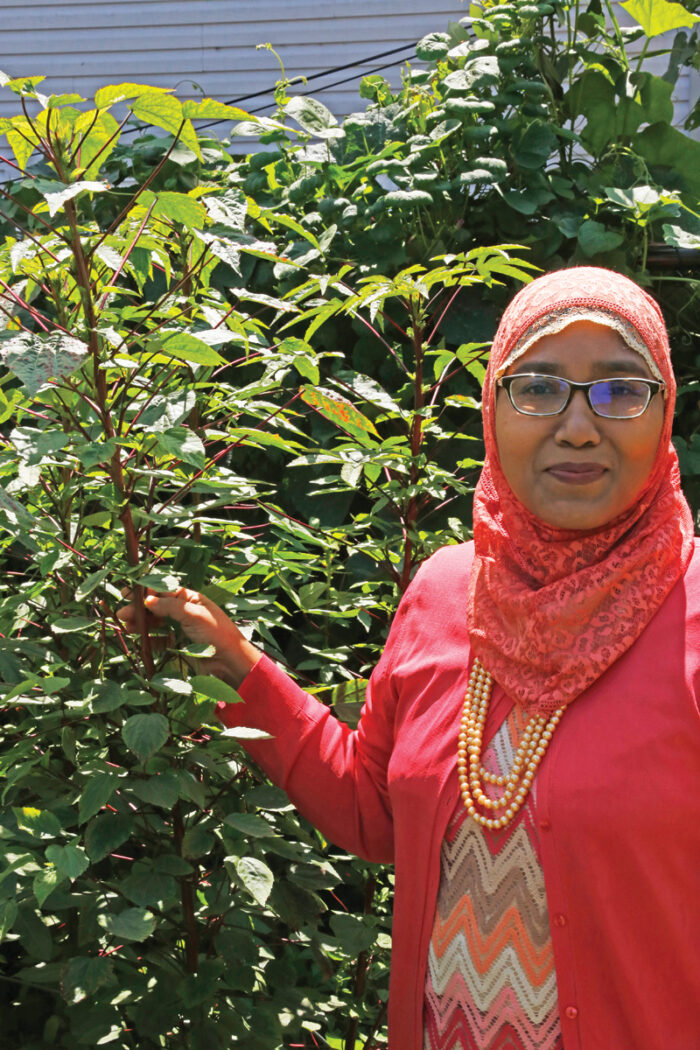
‘Supersweet 100’ cherry tomato
‘Supersweet 100’ cherry tomato is a favorite of Dominic Brennan, SEAMAAC’s community building coordinator. This indeterminate variety reliably produces high-volume clusters of classic cherry tomatoes that ripen early and continue over a very long season. The disease-resistant, fast-growing vines may grow 6 to 8 feet tall by summer’s end and will require staking. But the flavor is what makes ‘Supersweet 100’ rise to the top of Dominic’s list. “It’s the perfect refreshing bite on a hot summer day,” he says.
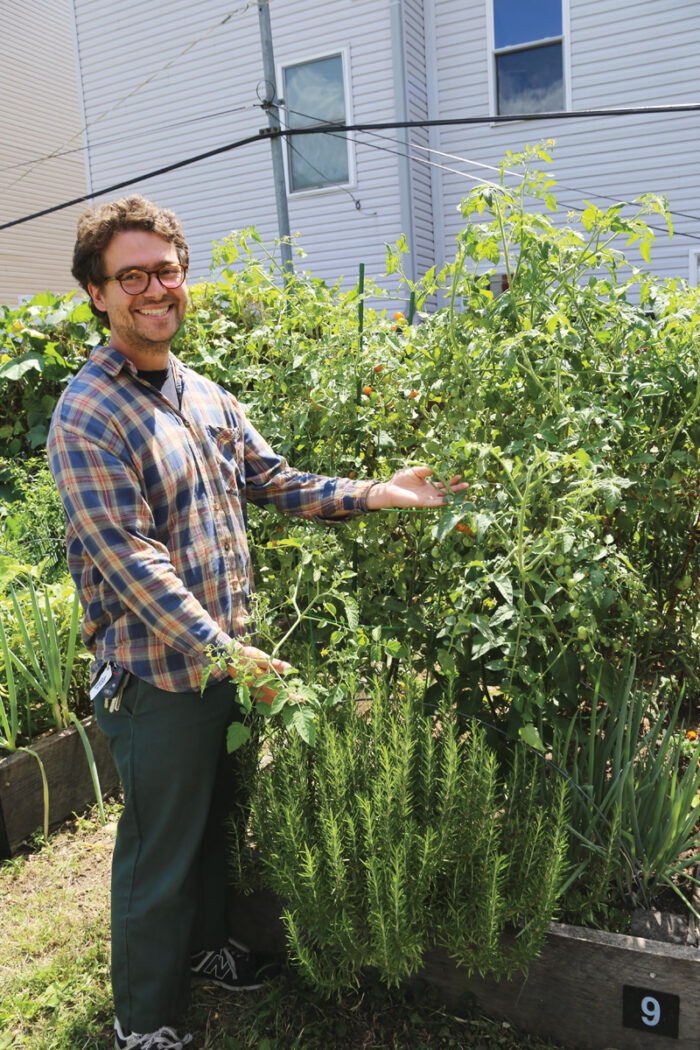
Photos: Carol Collins
Chamor Thomas is the development and communications manager at Neighborhood Gardens Trust (NGT), a land trust that preserves and supports community gardens and other shared open spaces across Philadelphia. NGT works with self-organized gardeners, community groups, property owners, and the City of Philadelphia to secure ownership or long-term leases for community-managed open spaces.
Fine Gardening Recommended Products
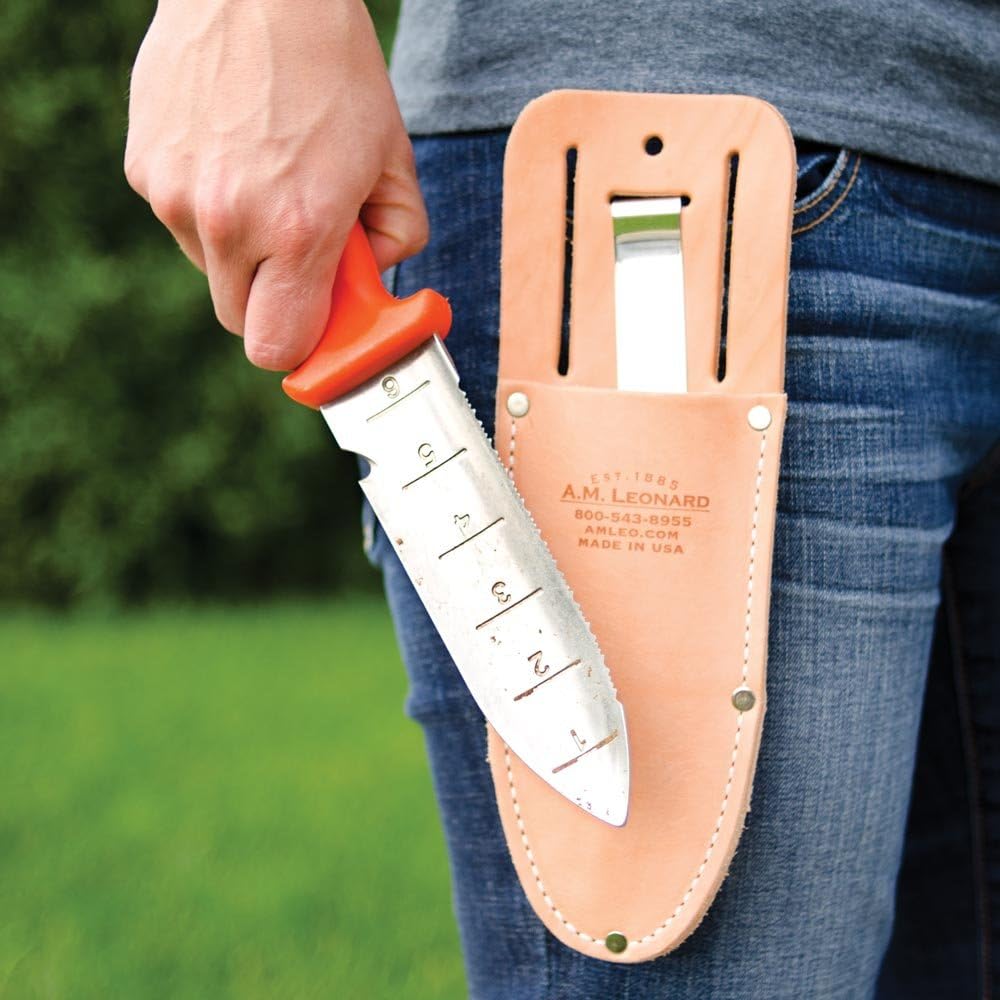
A.M. Leonard Deluxe Soil Knife & Leather Sheath Combo
Fine Gardening receives a commission for items purchased through links on this site, including Amazon Associates and other affiliate advertising programs.
MULTITASKING DUAL EDGES: a deep serrated edge and a tapered slicing edge ideal for tough or delicate cuts. DURABLE 6-inch stainless steel blade withstands 300 lbs of pressure. TWINE CUTTING NOTCH, DEPTH GAUGE MARKINGS & spear point – no need to switch tools when using this garden knife. LEATHER SHEATH: heavy duty, protective, clip on sheath to keep your knife convenient and secure. LIFETIME WARRANTY.
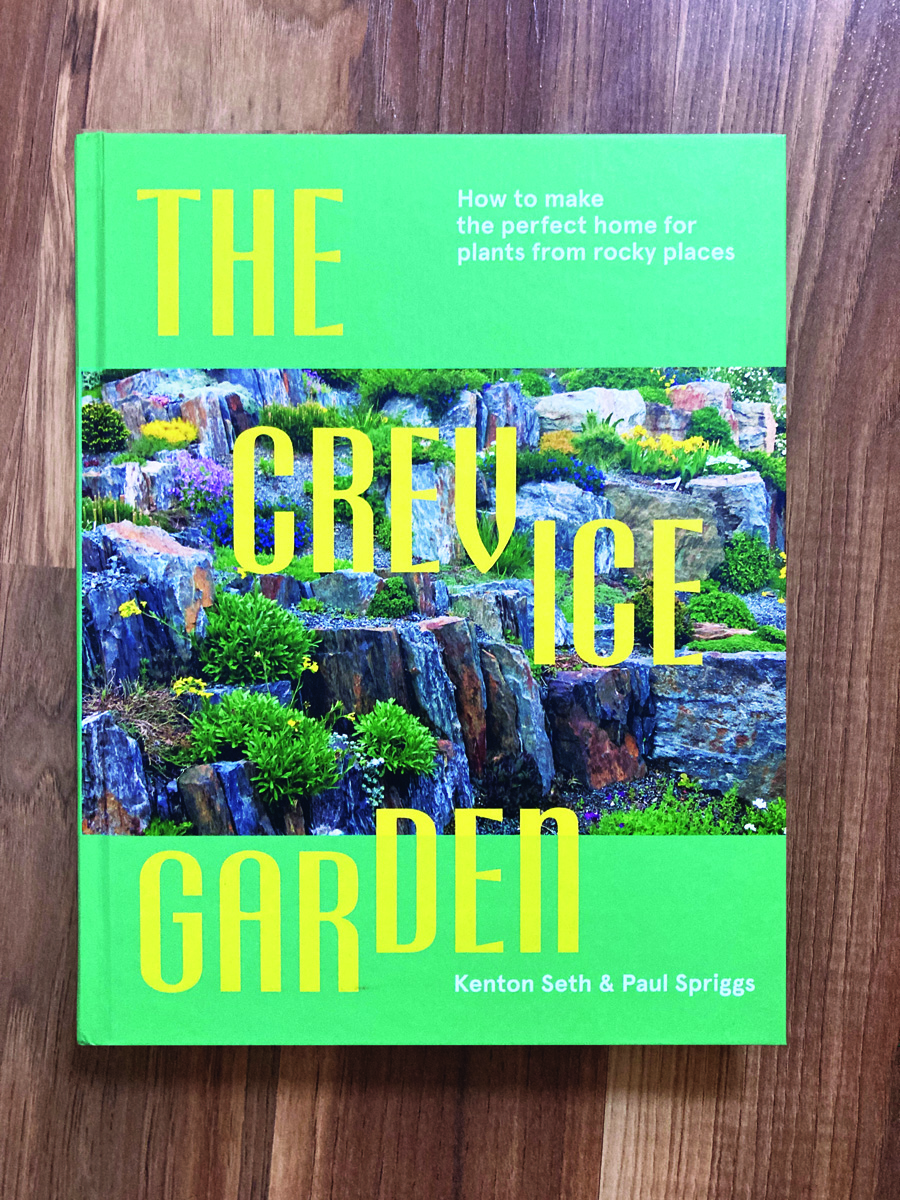
The Crevice Garden: How to make the perfect home for plants from rocky places
Fine Gardening receives a commission for items purchased through links on this site, including Amazon Associates and other affiliate advertising programs.
A crevice garden replicates the environmental conditions of mountain tops, deserts, coastlines, and other exposed or rocky places on earth. These striking garden features provide perfect conditions for the plants native to these far-off places, bringing the cultivation of these precious gems within everybody’s reach.
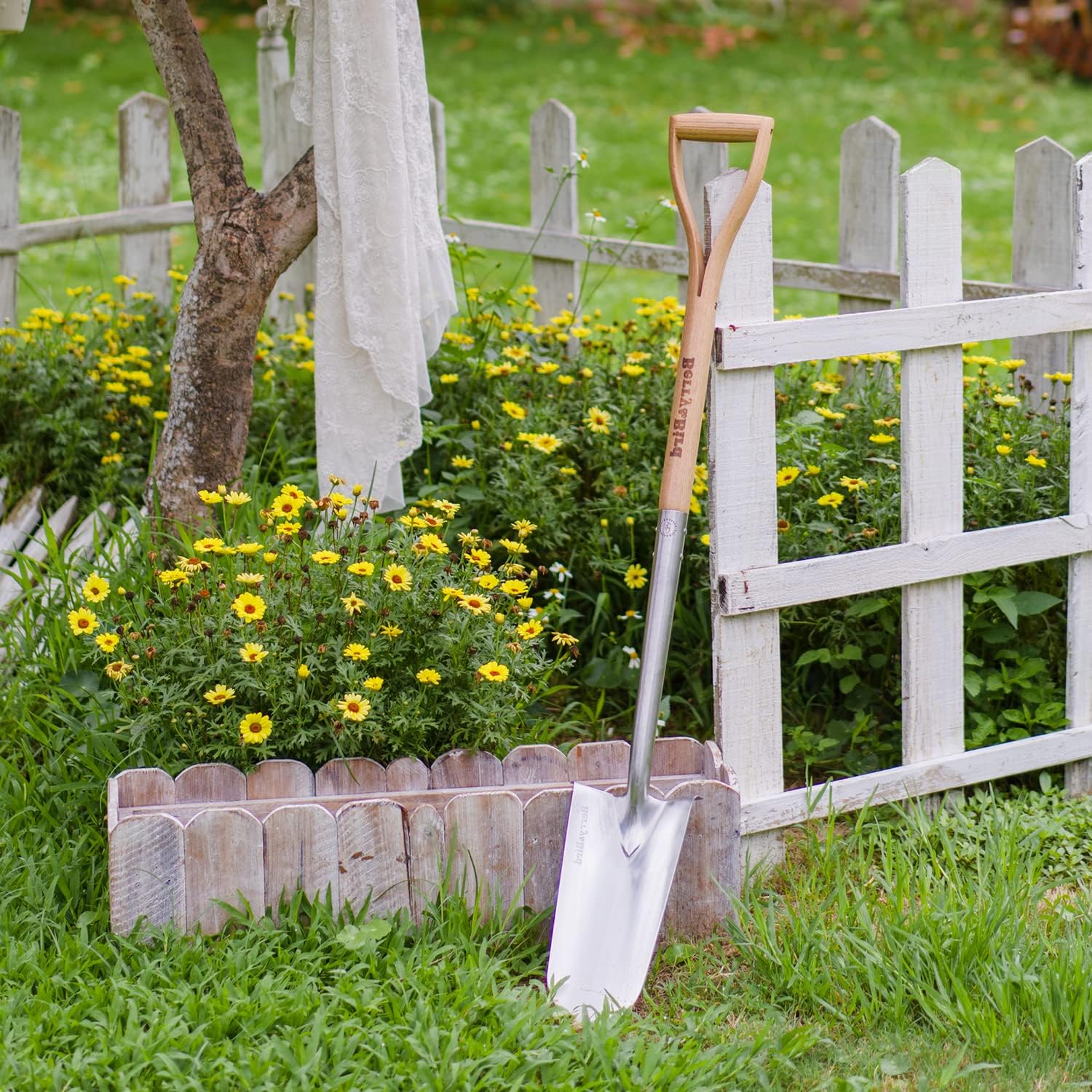
Berry & Bird Rabbiting Spade, Trenching Shovel
Fine Gardening receives a commission for items purchased through links on this site, including Amazon Associates and other affiliate advertising programs.
Ideal Tool for All Gardeners Use: Our heavy duty trenching shovel is designed by a professional gardening tool designer. Lifetime Durability: This heavy duty drain spade is made of high-quality stainless steel, it is very strong and durable, even if it is used for high-strength work, it will not bend. Ergonomic Wood Handle: The handle of this planting spade is made of ash hardwood harvested from FSC-certified forests and has an ergonomically streamlined design, making it very suitable for everyone’s hands. Multi-Use: This digging shovel is generally used for digging trenches, digging holes, transplanting, edging, moving compost, cutting thick turf and furrowing. The sharp blade allows you to cut, scoop, dig, lift and dice in hard soil.


